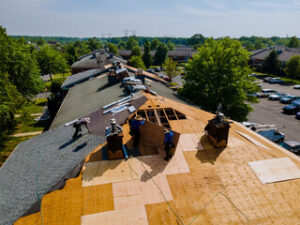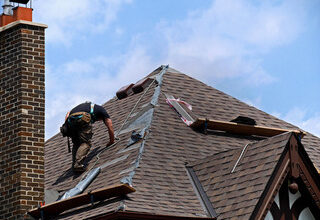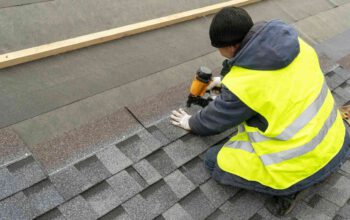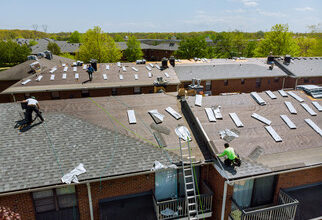Roofing materials and techniques vary, but in most cases, roofers will utilize various tools and equipment. A ladder is probably the most common item you’ll see on a construction site, as it’s the only way a roofer can access the roof area. Other tools include pry bars, utility knives, and shingle removers. Roofers also use Power equipment to install new roofs. Other tools roofers use include a level and tape measure.
 Regardless of the type of roof or cladding installation, hiring a licensed roofer is important. This type of contractor must have a valid license or face stiff fines in many states. Roofers must be licensed to work in the state and show their license number on all marketing materials. They must be trained and insured to perform their work. Click here to learn more about roofers and what they should look for when hiring.
Regardless of the type of roof or cladding installation, hiring a licensed roofer is important. This type of contractor must have a valid license or face stiff fines in many states. Roofers must be licensed to work in the state and show their license number on all marketing materials. They must be trained and insured to perform their work. Click here to learn more about roofers and what they should look for when hiring.
A roofer will be responsible for installing, repairing, and replacing the roofs of various types of buildings. Their job will require them to measure the roof accurately and calculate how much material is needed. Once they’ve got a good idea of what materials are needed, they’ll install them. Helpers are also necessary when a roofer is installing or repairing a roof. They’ll also help the roofers lift materials to the roof and remove the old roofing material.
When working on a roof, roofers must be aware of the risks that come with such work. The most common risks include slips and falls, burns from hot bitumen, and heat-related illnesses. Fortunately, most of these can be prevented with proper safety measures. It’s also important to be aware of the hot weather that roofs can experience. In extreme heat, this can lead to heat-related illnesses. A roofer’s safety is paramount, so be sure that he or she wears protective clothing.
Many types of buildings have several layers of roofing materials. On a low-slope roof, roofers install insulation on the roof deck. Then, they install layers of roofing felt. Roofing felt is a fabric soaked in bitumen. Next, the roofer applies hot bitumen over the roofing felt. This hot bitumen seals the seams and makes the roof waterproof. The roofers then build up the desired number of “plies” until it is completely covered with bitumen. The top layer is smooth or has gravel embedded into the bitumen.
Working high above the ground is extremely physically demanding for roofers. In addition to heavy lifting, they must be able to stand for long periods, bend over, and kneel. Working on a roof requires a certain amount of physical fitness and stamina, so many roofers work long hours during the winter to finish their jobs. If a job is completed quickly, this can require overtime. A roofer’s pay depends on their ability to stay fit.
A home is not complete without the proper roof framing. A roof frame supports layers of a material called decking, which is supported by the roof frame. Several layers of the roof rest on the decking. A dormer is a small structure that projects from the sloped roof. A gable roof has a slanting edge that extends over the end wall of the house. The eave and fascia are flat boards at the cornice edge. A shingle is secured with a thin layer of asphalt-saturated material called felt.
In addition to measuring for a new roof, you can also assess the condition of your current roof. A gable roof is relatively easy to measure, while a mansard or gambrel roof requires more complex calculations. These complicated roofing projects often involve waste since shingles must be cut to fit in tight spaces or nailed in even rows on the roof deck. Moreover, not every square foot of a roof is the same size. A phrase is known as “roof square” helps bridge the gap between simple and complex projects.



